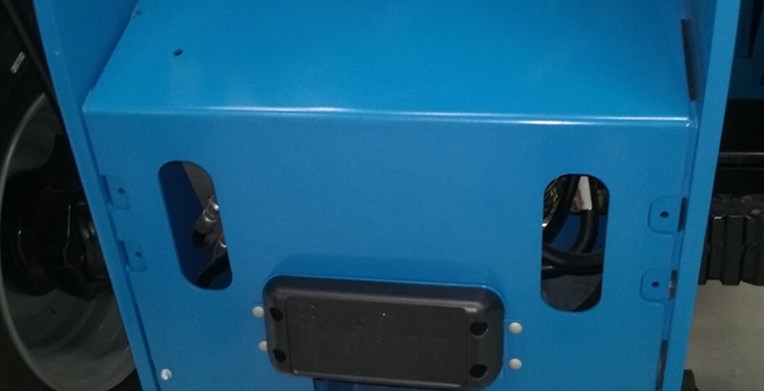Benefits of Having a Rear Proximity Alarm on your Telehandler
by Josh Taylor - Product Manager On Aug 31, 2017, 03:00 AM
Subscribe To Aerial Pros
Filter by tags
Beep… beep… It’s a familiar sound on any construction site meant to warn others that a piece of construction equipment is backing up. A standard feature that has been installed on telehandlers for more than a decade, back-up-alarms help surrounding bystanders and personnel with identifying when a telehandler is going to reverse direction. With the direct and indirect visibility aides (e.g. mirrors) the operator can also identify obstacles, bystanders and personnel before reversing the telehandler. In some instances, though, when visibility is obstructed, the operator is required to either get out and verify the path is clear of any obstacles, or ask for assistance from someone who can guide them.
That’s why some manufacturers, including Genie, are beginning to offer a new option on telehandlers — a rear proximity alarm. It can supplement existing indirect visibility aides to help with identifying surrounding obstacles.
What is a rear proximity alarm?
First introduced in the automotive industry, the rear proximity alarm uses sensors to identify any potential obstacles within close radius to the back of a machine and alerts the operator via visual and audio warnings.
Why you should add one to your telehandlers
 Improved efficiency is the number one reason you should consider adding a rear proximity alarm to your fleet of telehandlers. Even with mirrors, it’s sometimes difficult to see entirely around the machines and thus getting out to verify a clear path or asking someone to guide them can negatively impact productivity. The sensor will help detect objects directly behind the machine at close range and it has an expanded range to include objects behind the unit’s rear tires at greater distances.
Improved efficiency is the number one reason you should consider adding a rear proximity alarm to your fleet of telehandlers. Even with mirrors, it’s sometimes difficult to see entirely around the machines and thus getting out to verify a clear path or asking someone to guide them can negatively impact productivity. The sensor will help detect objects directly behind the machine at close range and it has an expanded range to include objects behind the unit’s rear tires at greater distances.
This, as well as other systems being used today, does have limitations due to maintenance practices, the size and shape of an object, composition, environmental conditions and operating range, so operators should not rely exclusively on the alarm system to determine personnel or objects are behind the machine.
You should also be aware that some larger construction companies are beginning to require rear proximity alarms on their equipment and the equipment they rent.
Rear proximity alarms will help keep your equipment productive on the job.
Related Posts

Spec’ing a Telehandler for Productivity
The telehandler’s ability to lift, move and place a range of materials and tools make it an indispensable machine for elevating efficiency and productivity on the job.
Continue Reading

Evaluating Telehandler Sizes To Select the Right Machine for the Job
The telehandler’s ability to lift, move and place a range of materials and tools make it an indispensable machine for elevating efficiency and productivity on the job.
Continue Reading

Aerial Pros Minute: Telehandler Lift Shackle
Learn more about Genie Telehandler lift shackles in this months Aerial Pros Minute
Continue Reading


